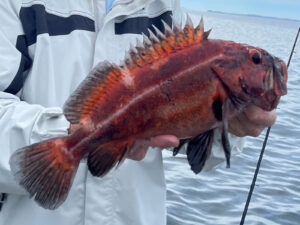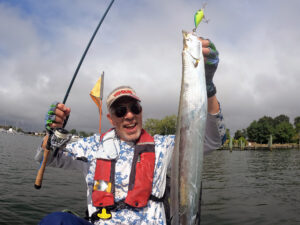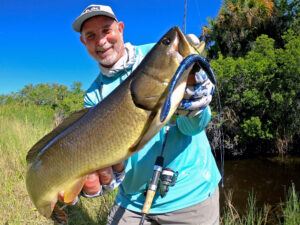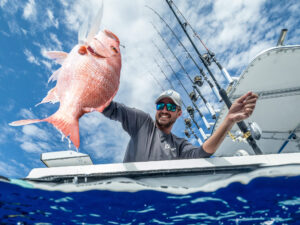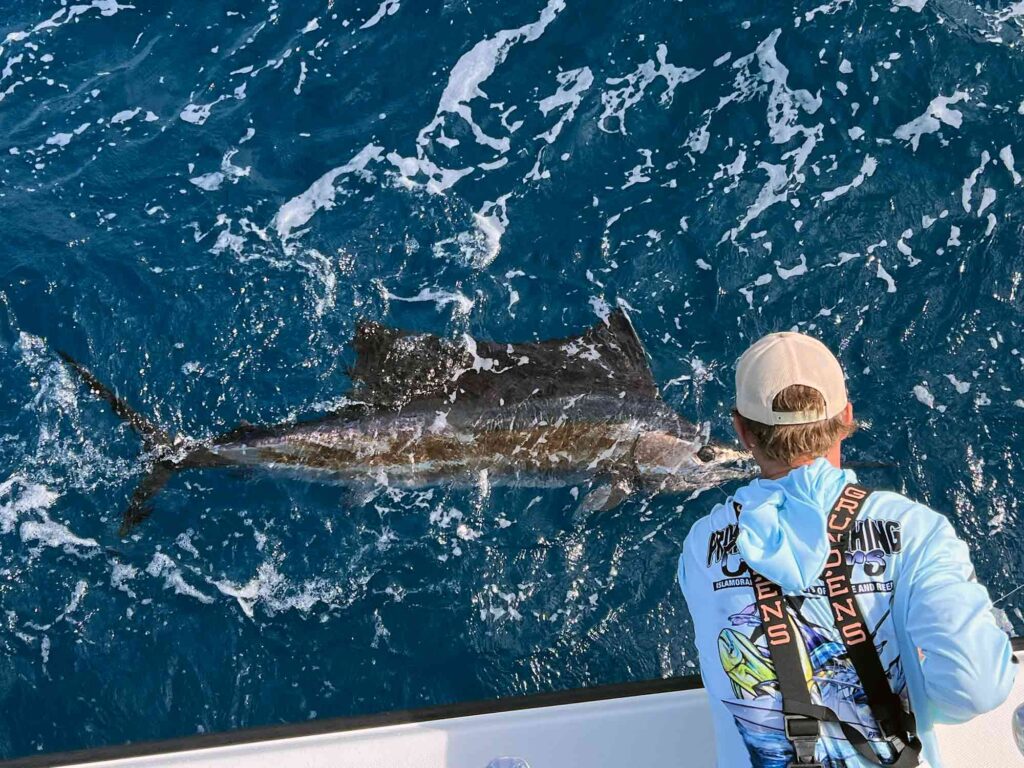
On kites, color changes, drop-back baits trolled and pitch baits over the reef, sailfish present some highly technical catch scenarios. Those fish beguile us, dazzle us, and make us feel fortunate to catch them on their swift migrations. Drape a sailfish across an angler’s lap for a picture though, and that fish loses a lot of its magic. Turns out that removing a sailfish from the water for a pic, or for any reason other than to keep the fish, is not only awkward looking, but also prohibited by federal regulations.
Don’t Remove Sailfish from Federal Waters
That’s right. While it’s legal to keep a sailfish if it measures 63 inches (lower jaw fork length) and the angler has all the necessary licenses and permits, it’s not legal in federal waters to remove a sailfish from the water if it’s meant to be released. It’s a violation of the Highly Migratory Species (HMS) regulations. The specific HMS regulation (50 CFR 635.21 (a) (2)) states: “If a billfish is caught by a hook and not retained, the fish must be released by cutting the line near the hook or by using a dehooking device, in either case without removing the fish from the water.”
Those regulations apply to anglers aboard vessels with an HMS Angling Permit, whether they fish in federal or state waters, and to fish for sailfish and other HMS species in federal waters, that permit is required. For anglers in state waters without an HMS permit, it’s up to the state whether they want to enforce the same regulations.
Can Anglers in Florida Bring a Sailfish into the Boat?
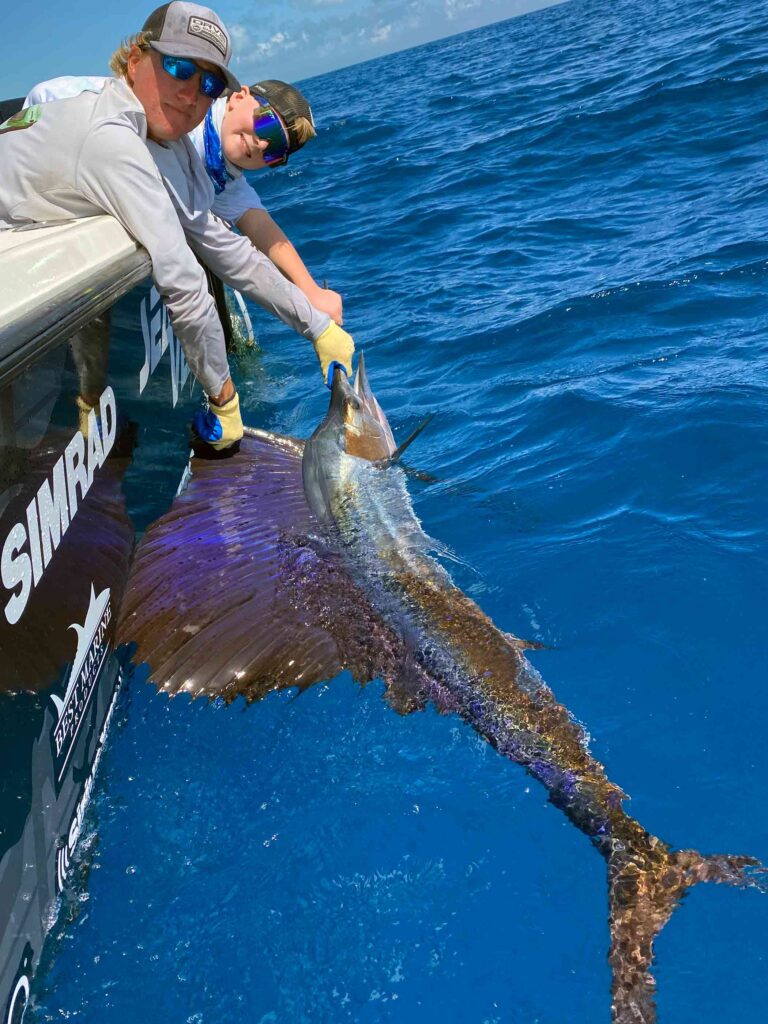
In the case of Florida, where many sailfish are caught in state waters, even from piers, Emily Abellera of the Florida Fish and Wildlife Conservation Commission (FWC) says, “Specifically for sailfish, temporary removal of sailfish from state waters would be allowed unless fishing aboard a vessel that has an HMS Angling Permit. In short, the restriction for temporary removal only applies in federal waters or anywhere if the vessel carries a federal HMS angling permit.”
“If you are an HMS permit holder,” affirms Cliff Hutt, a Fisheries Specialist with Atlantic HMS at NOAA Fisheries, “removing Highly Migratory Species from the water before release can result in a fine, but as with many violations first time offenders may also just get a warning or ‘compliance assistance’ as we like to call it.” On the books, the fine for the first infraction of the regulation is $500 and it increases with each infraction.
What Studies Show About Billfish Survival
These regulations intend to ensure the healthiest releases and the best survival chances for all the HMS species they cover. There is good research and evidence to back them up. A landmark study by Dr. John Graves of the Virginia Institute of Marine Sciences in 2016 showed the crucial nature of the release to billfish survivability. Hutt, of NOAA, says, “This study involved white marlin, which are very similar to sailfish. He [Graves] found post-release mortality (PRM) increased substantially for fish that were removed from the water for as little as 3 to 5 minutes. PRM was less than 2% for white marlin that were left in the water before release, while a full third of fish removed from the water died within 30 days.”
Listen to Experienced Captains
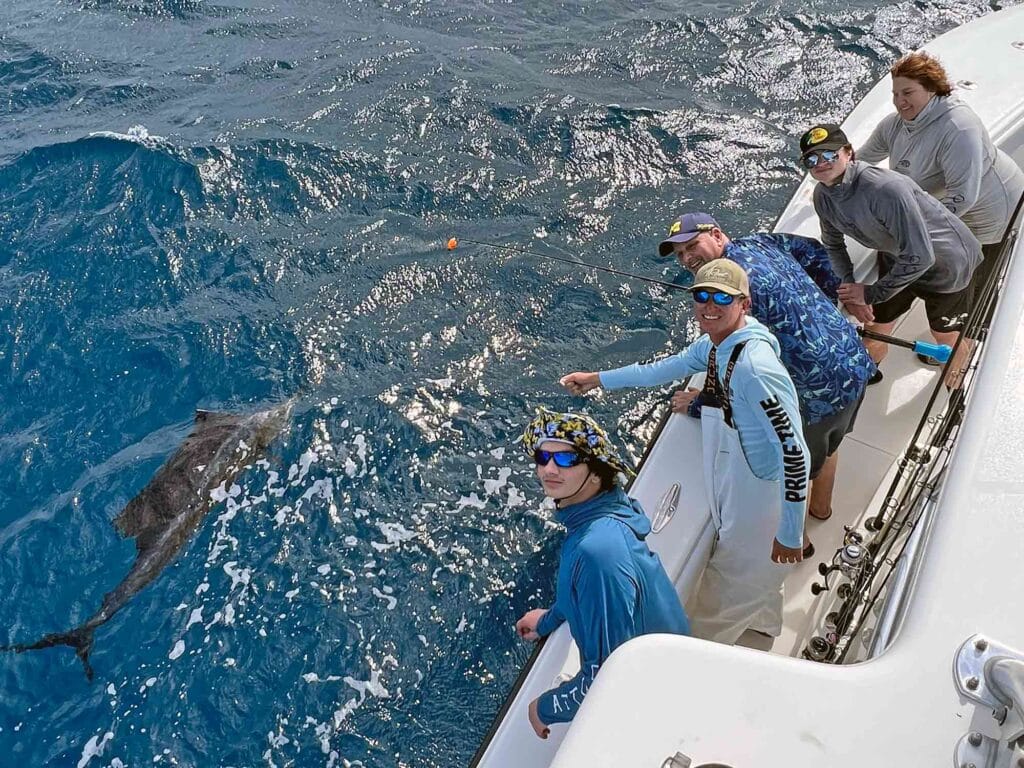
Charter captains in Florida know the value of following the regulations, despite a desire among some anglers to hoist that sailfish onto their laps for a picture.
“We obviously always have people who want to pull the fish out of the water for a photo,” says Capt. Scott Fawcett, of Off the Chain Fishing Charters, in Stuart, Florida. “I never allow it. It kills me when I see everybody else doing it. First, because it’s so bad for the fish and secondly, because my charter will want that same photo as well. Thirdly, when you catch a couple hundred or more sails a year, it’s only a matter of time before somebody gets hurt while trying to do that anyway. I’m a huge advocate of no trophy pictures.”
Capt. Ryan Wenzel, of 4Reel Charters in Islamorada, Florida Keys, another sailfish hotspot, agrees with those sentiments. “I’ve started to let my clients know that taking them out of the water increases the chances that the fish won’t survive afterwards,” Wenzel says. “Grabbing the bill or leader and leaning over the side makes for a great picture as well and doesn’t hurt the fish as much. Another good alternative would be tagging a fish instead, as it helps with research and adds another challenge when you’re fighting the sail and makes it feel a bit more rewarding than getting the picture.”
Sailfish Release Tips
For the release, here are a few tips to keep in mind:
- Beware of the bill every moment.
- Wear gloves and from above, hold the bill securely near the sailfish’s mouth, letting the mouth open as the fish swims upright in the water at the boat’s side.
- Slowly move the boat forward to let the sailfish regain strength.
- When the fish moves strongly under its own power, direct it away from the boat and let it go. If you want, raise a flag or a high-five.

